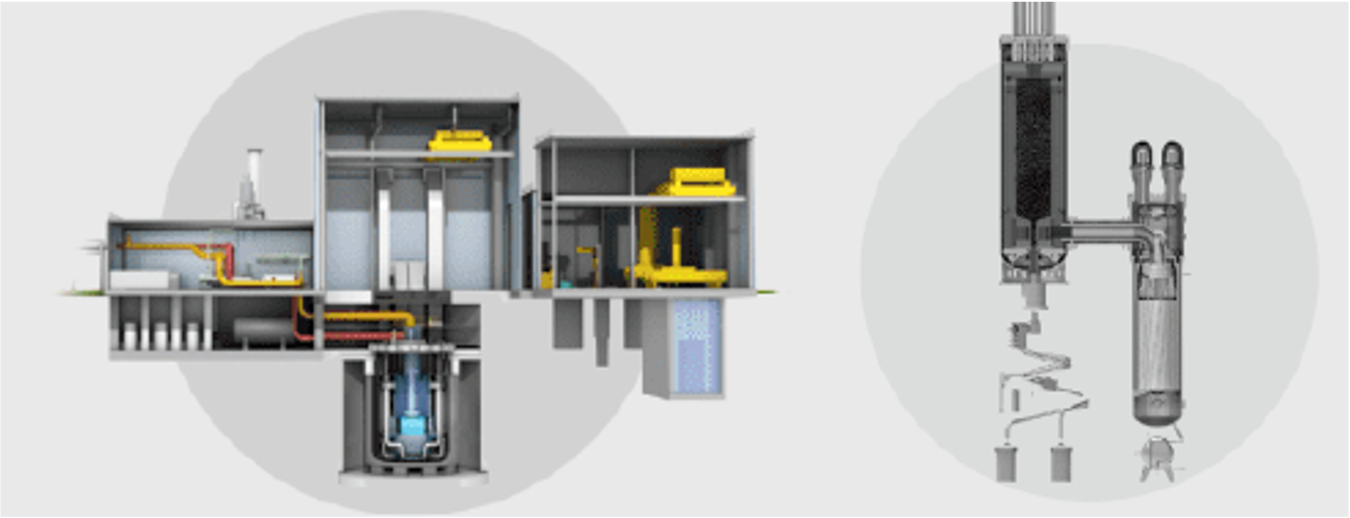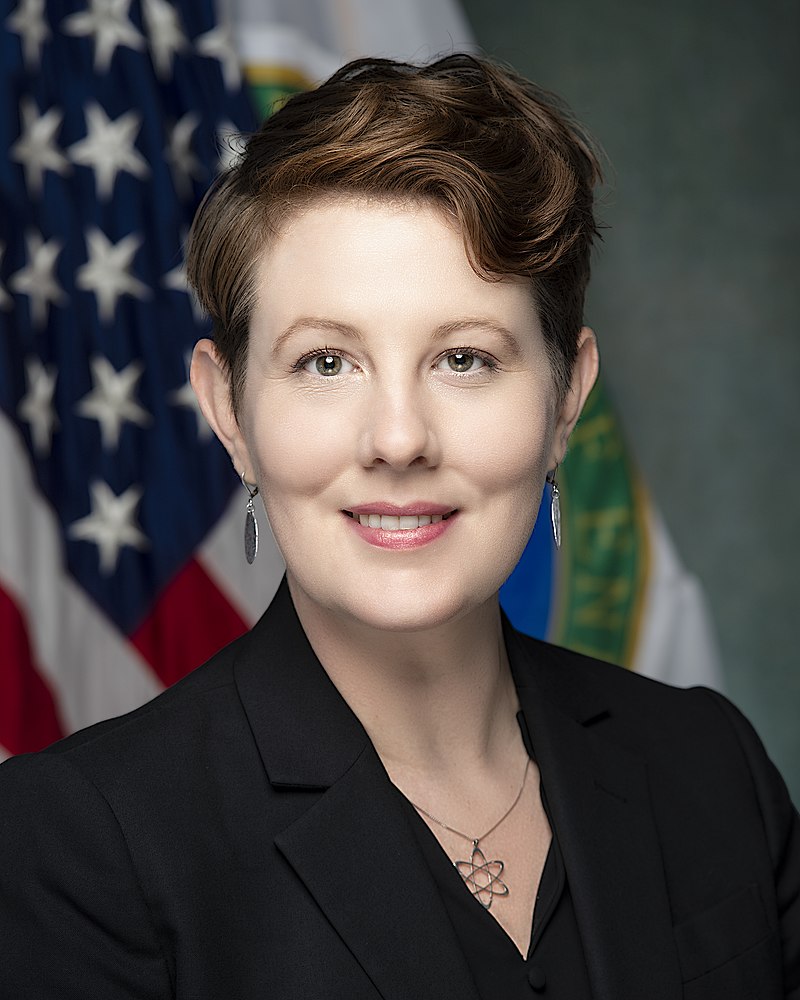Nuclear Energy & Advanced Reactor Designs
Kathryn Huff
Assistant Secretary of Energy for Nuclear Energy
Department of Energy
Sponsored by a PSW Science Member who has asked to remain anonymous
About the Lecture

Nuclear energy can play a role in the transition to a clean energy economy by fundamentally enabling the nation’s targets for clean, carbon-free electricity as well as non-electric energy markets. It has the potential to decarbonize many industrial sectors in the United States and abroad. For nuclear power to realize its potential to provide clean energy the nuclear power program and commercial nuclear will have to meet a number of challenges.
One of these is preservation of the existing fleet in the United States, which currently supplies a significant fraction of the Nation’s electricity. Another is the development and deployment of new advanced reactor types that will improve on the performance of the current fleet of conventional PWR reactors. Staging nuclear reactors and dealing with the remanent spent fuel has hindered development of nuclear power resources. Solving these challenges will require the development of consent-based siting processes for interim and then permanent spent nuclear fuel storage.
This lecture will discuss US Department of Energy nuclear power programs, especially the development of advanced reactor types, such as small modular nuclear reactors.
About the Speaker

Kathryn Huff leads the Office of Nuclear Energy as the Assistant Secretary. Before joining the Department of Energy, she was a professor in the Department of Nuclear, Plasma, and Radiological Engineering at the University of Illinois at Urbana-Champaign, where she led the Advanced Reactors and Fuel Cycles Research Group. She also was a member of the American Nuclear Society, where she was Chair of the Nuclear Nonproliferation and Policy Division and of the Fuel Cycle and Waste Management Division. And she has long been an advocate of best practices in open, reproducible scientific computing including leadership roles in such organizations as Software Carpentry, SciPy, Hacker Within, and the Journal of Open Source Software.
Her research is focused on modeling and simulation of advanced nuclear reactors and fuel cycles.
Among other honors and awards Kathryn received the Young Member Excellence and Mary Jane Oestmann Professional Women’s Achievement awards.
She earned a BS in Physics at the University of Chicago and a PhD in nuclear engineering at the University of Wisconsin-Madison. After completing her PhD she was a postdoctoral fellow in both the Nuclear Science and Security Consortium and the Berkeley Institute for Data Science at the University of California – Berkeley.
Minutes
On December 15, 2023, in the Powell Auditorium of the Cosmos Club in Washington, D.C., President Larry Millstein called the 2,487th meeting of the Society to order at 8:02 p.m. ET. He began by welcoming attendees, thanking sponsors for their support and announcing new members. Scott Mathews then read the minutes of the previous meeting including the lecture by Missy Cummings on “Self-Driving Cars”. The minutes were approved as read.
President Millstein then introduced the speaker for the evening, Kathryn Huff, Assistant Secretary of Energy for Nuclear Energy at the Department of Energy. Her lecture was titled, “Nuclear Energy & Advanced Reactor Designs.”
The speaker began by stating that her goal was to present an overview of different reactor types, the basic physics of reactors, and the design variables associated with different reactors. She indicated that the design variables were dictated by reactor performance targets, such as: reactor size, operating temperature, power output, fuel type, and reactor kinetics. Huff then presented the basic physics of fission reactors. She discussed neutron interactions, which include scattering and absorption, neutron moderation, cross sections, fission products, and the three classifications of fission isotopes: fissionable, fissile, and fertile. She indicated that an isotope capable of undergoing fission after absorbing a high energy neutron was considered “fissionable”, but isotopes that readily undergo fission with low energy or thermal neutrons is considered “fissile”. Whereas, an isotope that can absorb a neutron and become fissile is considered “fertile”.
Huff then discussed the importance of reactor kinetics, explaining the concepts of criticality and reactivity, emphasizing the desire for a stable reactor with negative feedbacks to prevent a runaway reaction. The impact of temperature on resonances and the Doppler effect was discussed, with a focus on how temperature changes can influence reactivity. She presented the concepts of “breading” and “burning”: creation and destruction of nuclei that lead to changes in isotope concentration during reactor operation. Huff discussed how the build-up of fission products would lead to changes in reactivity. She also discussed the fact that many of the fission products have half-lives on the order of minutes, and thereby create delayed neutrons which must be considered when modelling reactor kinetics. Huff then described the difference between a “fast reactor”, in which the fuel fissions by absorbing high energy neutrons, and a “thermal reactor”, in which the neutron energies are dramatically reduced by a moderator before initiating fissions.
The speaker then turned to specific advanced reactor designs, giving details about a number of reactors that are currently in the design or construction phase. These include: the TerraPower Natrium reactor, the X Energy Xe100 high-temperature gas reactor, Kairos Power’s Hermes reactor, Westinghouse’s eVinci reactor, BWX Technologies’ Pele prototype reactor, and the Idaho National Lab’s MARVEL microreactor. These advanced reactors use a wide variety of cooling technologies (including: light water, high temperature gas, molten salt, liquid metal, and heat pipes), and several fuel geometries (including: conventional oxide fuels, metallic fuels, pebble-bed fuels, TRISO or Tri-structural Isotropic fuels, and liquid molten salt fuels).
Huff ended the lecture by mentioning a number of other research efforts being funded or overseen by her office in the Dept. of Energy. These included: molten salt reactors, a database of molten salt properties, fast reactors, integrated energy systems, materials for reactors, and microreactor testing facilities.
The lecture was followed by a Question and Answer session.
One member asked when the DOE would “pick a winner” amongst the various design concepts being proposed and tested. Huff replied that such a decision would be much easier in a country like France, where the electric utility is wholly owned by the French Government. She indicated that more than 40 private reactor development companies have approached the DOE, and that they have “down-selected” to a much smaller group, but that ongoing research and free-market economics would have to decide this question in the future.
Another member asked about the possibility of using collections or “swarms” of micro reactors, similar to the way high performance computing uses collections of microprocessors. Huff responded that such an approach would require the construction of “meta-factories” to produce the micro reactors, in order to have an economy-of-scale, and that currently, the cost per kilowatthour of micro reactors was significantly higher than the cost per kilowatthour of GigaWatt sized reactors.
Another person asked about the Vogtle commercial reactor project in Georgia, which he claimed was completed seven years late and $17 billion over budget. Huff noted that multi-billion-dollar construction projects in the US often have such difficulties. By way of example, she mentioned Boston’s “Big Dig” project. She indicated that these mega-projects are often subject to market forces and economic considerations that the developers cannot control. In particular, she noted the during the construction of Vogtle 3 and Vogtle 4, the construction required 8,000 skilled tradesmen. Such a workforce was difficult to find in rural Georgia, especially in a highly competitive job market.
A question from the web asked if commercial reactors were forced to use their original, analog controls because of regulatory hurdles associated with NRC approval of modern, digital controls. Huff confirmed that analog control rooms are standard in commercial reactors. She indicated that the NRC was currently “walking through the full digitization of a control room”, with plans to have it fully licensed by 2026 or 2027. Once the process is completed, she says, other commercial reactors can be retro-fitted and recertified.
The Q&A session concluded with a question about advanced technologies for storage of nuclear fuel and high-level radioactive waste. Huff responded that while her office focuses on advanced reactor design, there is another office within the DOE that focuses on the “disposition and disposal of spent nuclear fuel”. She indicated that this office has several research and development programs on integrated waste management systems, including storage and transportation technologies.
After the question and answer period, President Millstein thanked the speaker and presented her with a PSW rosette, a signed copy of the announcement of her talk, and a signed copy of Volume 1 of the PSW Bulletin. He then announced speakers of up-coming lectures, made a number of housekeeping announcements, and invited guests to join the Society. He adjourned the 2487th meeting of the society at 10:01 pm ET.
Temperature in Washington, DC: 6.1° C
Weather: Fair
Audience in the Powell auditorium: 61
Viewers on live stream: 27 …for a total of 88 live viewers
Views of the video in the first two weeks: 586